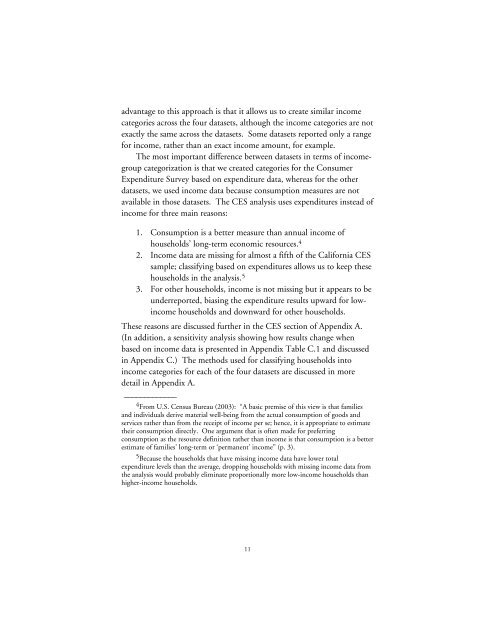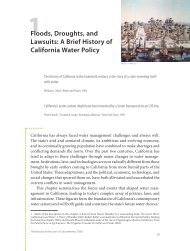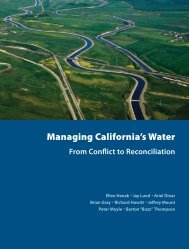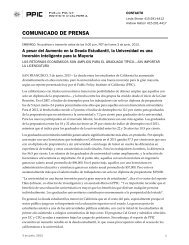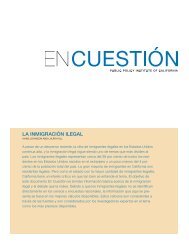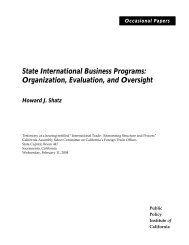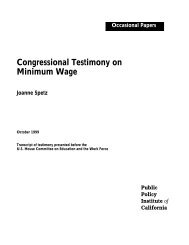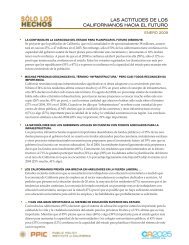Transportation Spending by Low-Income California Households ...
Transportation Spending by Low-Income California Households ...
Transportation Spending by Low-Income California Households ...
Create successful ePaper yourself
Turn your PDF publications into a flip-book with our unique Google optimized e-Paper software.
advantage to this approach is that it allows us to create similar income<br />
categories across the four datasets, although the income categories are not<br />
exactly the same across the datasets. Some datasets reported only a range<br />
for income, rather than an exact income amount, for example.<br />
The most important difference between datasets in terms of incomegroup<br />
categorization is that we created categories for the Consumer<br />
Expenditure Survey based on expenditure data, whereas for the other<br />
datasets, we used income data because consumption measures are not<br />
available in those datasets. The CES analysis uses expenditures instead of<br />
income for three main reasons:<br />
1. Consumption is a better measure than annual income of<br />
households’ long-term economic resources. 4<br />
2. <strong>Income</strong> data are missing for almost a fifth of the <strong>California</strong> CES<br />
sample; classifying based on expenditures allows us to keep these<br />
households in the analysis. 5<br />
3. For other households, income is not missing but it appears to be<br />
underreported, biasing the expenditure results upward for lowincome<br />
households and downward for other households.<br />
These reasons are discussed further in the CES section of Appendix A.<br />
(In addition, a sensitivity analysis showing how results change when<br />
based on income data is presented in Appendix Table C.1 and discussed<br />
in Appendix C.) The methods used for classifying households into<br />
income categories for each of the four datasets are discussed in more<br />
detail in Appendix A.<br />
_____________<br />
4 From U.S. Census Bureau (2003): “A basic premise of this view is that families<br />
and individuals derive material well-being from the actual consumption of goods and<br />
services rather than from the receipt of income per se; hence, it is appropriate to estimate<br />
their consumption directly. One argument that is often made for preferring<br />
consumption as the resource definition rather than income is that consumption is a better<br />
estimate of families’ long-term or ‘permanent’ income” (p. 3).<br />
5 Because the households that have missing income data have lower total<br />
expenditure levels than the average, dropping households with missing income data from<br />
the analysis would probably eliminate proportionally more low-income households than<br />
higher-income households.<br />
11


